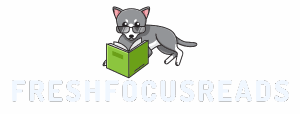In today’s digital classroom, the line between creativity and convenience blurs faster than a student’s last-minute essay submission. With tools like ChatGPT at their fingertips, students can whip up essays and reports in a snap. But how can educators tell if that sparkling prose is a product of genuine effort or just a clever AI assistant?
Fear not! This article dives into the quirky world of detecting AI-generated content. Whether you’re a teacher on a quest for authenticity or a curious parent wondering if your kid’s got a secret AI sidekick, you’ll find the insights you need. Get ready to uncover the truth behind those perfectly polished papers, and maybe even have a chuckle along the way. After all, who knew checking for AI could be this entertaining?
Table of Contents
ToggleImportance Of Academic Integrity
Academic integrity serves as the foundation of educational institutions. Upholding this principle promotes trust among students, educators, and the academic community. Authentic work reinforces the credibility of academic achievements, ensuring that grades reflect true effort and understanding.
Integrity influences students’ personal growth and ethical development. Engaging with the material fosters critical thinking and problem-solving skills essential for future success. Students who embrace integrity cultivate a sense of responsibility for their learning process.
Maintaining academic integrity protects the value of degrees and certifications. Employers often seek candidates who demonstrate dedication and honesty in their work. A diploma carries weight only when it accurately reflects the knowledge and skills of its holder.
Institutions implement policies to support academic integrity. Clear guidelines establish expectations for student behavior, helping them understand the consequences of dishonest practices. Training and resources on proper research methods and citation practices are vital for students to develop good habits early in their academic careers.
Collaborative efforts can aid in fostering a culture of integrity. Faculty can engage students in discussions about ethical practices and the impact of plagiarism. Creating a supportive environment encourages open dialogue about the use of AI tools like ChatGPT while reinforcing the importance of original thought.
Ultimately, a commitment to academic integrity shapes the educational landscape. By valuing authenticity, students prepare for future challenges, creating a generation of individuals who prioritize ethics and integrity in their endeavors.
Ways To Check If Student Used ChatGPT

Educators can employ various methods to determine if a student’s work is AI-generated. The following techniques help assess writing authenticity effectively.
Analyzing Writing Style
Analyzing writing style reveals significant differences in language usage. Unique word choices, sentence structures, and tone can indicate AI involvement. Students often have distinct patterns that vary from AI-generated text. For instance, inconsistencies in vocabulary sophistication and complexity can suggest manipulation. Tools designed for style analysis can provide insights into typical human responses versus AI patterns. Tracking changes in writing over time shows whether a consistent voice is present.
Comparing Ideas And Concepts
Comparing ideas and concepts is crucial in identifying potential AI usage. Often, AI-generated content lacks depth and originality. Students may rely on personal experiences and unique perspectives, which give their work authenticity. Conversely, AI tools often produce generic information or common conclusions. Instructors can examine the relevance and creativity of ideas presented. Identifying repetition or cliché phrases in submitted work may raise suspicions of AI usage. Evaluating the depth of analysis can further clarify whether the content reflects genuine understanding.
Tools And Software For Detection
Several tools help educators detect AI-generated content in student submissions. Understanding these resources enhances the ability to maintain academic integrity.
AI Content Detection Tools
AI content detection tools analyze text for characteristics typical of machine-generated output. Tools like OpenAI’s Text Classifier evaluate language patterns and stylistic features. These programs often provide a confidence score, indicating the likelihood that a piece of text originated from AI. Some also highlight inconsistencies in tone and structure. With continuous updates to their algorithms, these tools improve accuracy over time, aiding educators in distinguishing between human and AI writing.
Plagiarism Checkers
Plagiarism checkers serve as critical resources for identifying copied content. Tools such as Turnitin and Grammarly uncover similarities between student work and existing literature. These checkers provide detailed reports, pinpointing specific sections of text that may be unoriginal. Educators can use this information to assess the authenticity of submissions. While these tools primarily detect direct copying, they can also indicate potential AI involvement when texts appear overly polished or lack personal voice. Understanding how to interpret the results from plagiarism checkers strengthens the detection process.
Challenges In Detection
Detecting AI-generated content presents various challenges for educators. One significant hurdle involves distinguishing writing styles. Students possess unique voices that differ from AI outputs, yet recognizing these nuances isn’t always straightforward. Many AI-generated texts exhibit an overly polished structure, making it difficult to identify them based solely on language use.
Lack of originality also complicates the detection process. AI tools often generate content that may seem generic or lacking in depth. When a student’s work appears formulaic, educators might suspect AI involvement, but confirming this suspicion can prove challenging. Personal anecdotes and varied perspectives typically enrich student submissions, so their absence can raise red flags.
Moreover, reliance on tools poses limitations. Although AI content detection tools like OpenAI’s Text Classifier enhance the detection process, they aren’t foolproof. These tools analyze text for characteristics associated with machine-generated content, assigning confidence scores to help educators gauge authenticity. Results from such tools require careful interpretation, as false positives may occur.
Plagiarism checkers serve an essential role in maintaining academic integrity. Turnitin and Grammarly help identify copied material but may also signal AI usage when writing lacks personal flair. Educators can find substantial value in these resources, yet they cannot solely rely on them for conclusive evidence.
Lastly, the dynamic nature of AI tools continues to evolve. As AI technology becomes more sophisticated, its outputs may closely mimic genuine student writing. Staying current with AI developments ensures educators adapt their detection methods accordingly. Overall, navigating the complexities of AI detection requires a combination of tools, methods, and a keen eye for inconsistencies.
Best Practices For Educators
Educators can implement several best practices to efficiently identify AI-generated content in student submissions. First, establish clear guidelines on the acceptable use of AI tools. Defining expectations promotes academic integrity and reduces the likelihood of misuse.
Next, engage students in discussions about writing authenticity. Open conversations about the implications of using AI can foster a sense of responsibility and ethical reasoning. Incorporating lessons on the importance of originality can further encourage students to reflect on their own work.
Instructors should familiarize themselves with AI detection tools. Utilizing resources like OpenAI’s Text Classifier helps analyze texts and assess whether the work may be machine-generated. Evaluating results with a critical eye ensures accurate interpretations and avoids misconceptions.
Encouraging peer reviews and collaborative assignments serves as an effective strategy. Students who collaborate on projects often produce more authentic work, where distinct voices are evident. Enhanced creativity through teamwork can reduce reliance on AI-generated content.
Observing writing patterns over time can assist educators in detecting changes in students’ voices. Sudden shifts in style or depth may indicate the use of external tools. Tracking individual progress also strengthens understanding of each student’s unique voice.
Finally, continuous professional development in AI technology is crucial. Staying updated on advancements allows educators to adapt their detection methods effectively. Engaging with fellow educators and sharing experiences enriches strategies for maintaining academic integrity.
The challenge of identifying AI-generated content in student work is significant but not insurmountable. By leveraging a combination of detection tools and best practices, educators can foster a culture of academic integrity. Engaging students in conversations about authenticity and ethical use of technology is vital for personal growth and responsibility.
As the educational landscape continues to evolve with advancements in AI, staying informed and adaptable is crucial. By implementing clear guidelines and encouraging collaboration, educators can help students develop a strong sense of ethics and authenticity in their work. Ultimately, these efforts contribute to a more trustworthy academic environment that values genuine learning and critical thinking.

